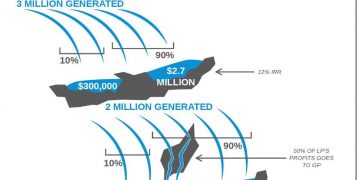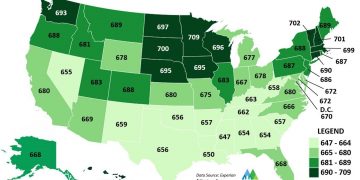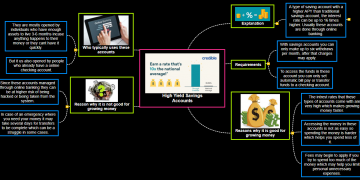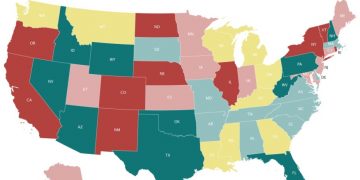Protection is perhaps the most effective way to acquire inner serenity against specific sorts of mishaps and other disagreeable circumstances. For instance, we’ll purchase protection for our electronic gadgets, vehicles, and even our home.
That way, if something somehow managed to happen to our assets (or perhaps our wellbeing), we can basically get some sort of pay to assist us with managing the circumstance.
For instance, how about we envision that your home experienced significant harm because of something like a weighty tempest or a fire. Most home protection arrangements would take care of the expenses of fixing your home and even assistance pay for your harmed effects.
Notwithstanding, assuming that your house is severely harmed and dreadful, you will not have the option to reside in your home while those fixes are continuing. All things considered, you’ll probably need to remain elsewhere, regardless of whether it’ll cost cash.
Fortunately, these additional expenses might be covered by loss of utilization inclusion in your property holder’s protection strategy. So in this article, we will clarify somewhat more with regards to what this sort of inclusion is.
What Is Loss of Use in Home Insurance?
This kind of home protection inclusion is regularly known as “Inclusion D loss of utilization” or “loss of utilization protection.” It has various marks, yet they successfully mean exactly the same thing. The accompanying definition covers it pleasantly: “a piece of your mortgage holder’s protection strategy that covers everyday costs because of your house being appalling.”
In any case, what considers your house being dreadful? Everything lays on this definition. Assuming your insurance agency disagrees that your house is dreadful, they may level out reject your deficiency of utilization guarantee.
To characterize your home as dreadful, the harm should initially be covered by your mortgage holder’s protection or tenant’s protection. This implies your home probably experienced a covered hazard. Risk, for this situation, implies the reason for harm to your home.
This incorporates things like fire, tempest, snow or lightning harm, or even defacing. However long your house is covered by the hazard that caused the harm, you will probably be qualified for loss of utilization inclusion.
It’s vital to focus on the covered risks and the agreements set by your property holder’s protection strategy. For example, fire is regularly covered by property holder’s protection and will qualify you for loss of utilization protection.
Be that as it may, flooding is for the most part avoided by property holders’ and tenants’ protection approaches and isn’t constantly viewed as a covered risk.
Leaseholders Insurance
Leaseholders’ protection will probably cover loss of utilization in the event that you’re leasing a property. In any case, it’s as yet essential to check out the agreements of your protection strategy to guarantee that you’re getting the projection that you anticipate.
Reasonable Rental Value
On the off chance that the harmed home isn’t your main living place, you might have the option to guarantee Fair Rental Value. This happens assuming the home that was harmed is appalling. You’ll ordinarily get inclusion for the rental payments you will miss until the house becomes livable once more.
What’s Covered By Loss of Use Insurance?
As referenced above, reasonable rental worth inclusion is generally a type of inclusion that guarantees that you keep on getting a portion of the lease that you would’ve from your occupant. However, what else is covered by loss of utilization protection for property holders?
Extra everyday costs inclusion (otherwise called ALE protection) can repay mortgage holders for additional everyday costs that happen because of residing away from their home. However, you will just get assets up to your inclusion limit.
Cell utilization can be paid out, as well, on the off chance that you can’t get to your landline association.
You might be covered for driving significant distances from your brief spot of home to arrive at work.
On the off chance that your suppers have expanded in cost, this can likewise be covered.
Utility set up at your transitory home may likewise bring about additional expenses, which will be covered by loss of utilization protection.
So, assuming there’s something that you really want to pay for because of losing your home to a mishap or catastrophe, then, at that point, it’s probably covered by your guarantor, and you shouldn’t have to stress. In any case, it’s generally worth twofold really taking a look at their arrangements to check whether there are any conditions or restrictions that you should know about.
What Isn’t Covered?
As referenced beforehand, flooding is ordinarily not covered by loss of utilization insurance. This sort of protection additionally can’t cover any costs that you needed to cover prior to losing your home. That implies that you’ll in any case have to pay your home loan and other protection charges even while you’re residing in brief convenience.
What’s Considered a Living Expense?
We referenced that extra everyday costs could be covered by a deficiency of utilization guarantee, however, what precisely does this incorporate?
As a rule, brief lodging is the most elevated of every one of extra costs. It very well may be paying for lodging, it could mean leasing another loft, or it may include remaining at an inn. Whatever the circumstance is, you’ll be repaid for the stay.
In any case, an everyday cost likewise incorporates the expense of moving and putting away things. On the off chance that you need to lease a van or recruit moving assistance to get your possessions from your past home to your transitory home, inclusion will apply.
Finally, exorbitant bills because of a covered misfortune can likewise be covered by your strategy. This incorporates, however, isn’t restricted to, contemplations like a dress, food, utilities, vehicle mileage, pet boarding, etc. Recollect that while your strategy will cover the distinctions in these costs (assuming they are available), there is as yet a cap on the amount you will get in your case.
Loss of Use Coverage in Auto Insurance
As you might have speculated, loss of utilization inclusion isn’t attached all of the time to mortgage holders and their properties. Such inclusion will apply for most protection approaches where losing admittance to something can wind up costing the proprietor cash over the long haul. An extraordinary illustration of this would be accident coverage.
Envision this; your vehicle has stalled because of a mishap and necessities fixes. In any case, since you can’t utilize your vehicle to get to work, it’s viewed as a deficiency of utilization, and accepting your accident protection strategy covers it, there are ways of assisting you with getting back out and about.
By and large, this would imply that your safety net provider pays the rental incentive for a vehicle that you use while your essential vehicle is being fixed.
There are clearly a few limitations to know about. For instance, you will not have the option to lease a vehicle that is two times or threefold the worth of your current one. All things considered, you’ll have to pick a comparable vehicle, or your safety net provider won’t acknowledge your deficiency of utilization guarantee. All things considered, your deficiency of utilization inclusion for a rental vehicle will undoubtedly be a similar vehicle or one with very much like determinations.
















































